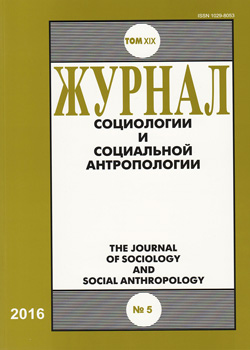Дифференциация в среднем образовании и социальное неравенство образовательных возможностей: результаты крупномасштабного международного сравнения
Ключевые слова:
среднее образование, социальное неравенство, образовательные возможности, социальное происхождение, сравнительный международный анализ, лонгитюдные данные
Аннотация
В статье изложены основные результаты исследовательской стадии проекта eduLIFE, в ходе которой изучалась роль дифференциации среднего образования в формировании неравенства образовательных возможностей. Нами было проведено международное исследование, в рамках которого был выполнен детальный количественный анализ образовательной дифференциации в 17 странах с различными моделями среднего образования. Исследование, проводившееся в каждой стране, должно было ответить на три общих исследовательских вопроса: 1) Как учащиеся распределяются между разными типами основного общего (lower secondary education) и общего среднего образования (upper secondary education)? 2) Насколько свободным является переход между разными типами основного общего и общего среднего образования и с чем это связано? 3) Как образовательная дифференциация и отбор в среднем образовании влияют на социальное неравенство в формировании дальнейших образовательных траекторий? Исследование осуществлялось учеными, обладающими экспертным знанием присущего странам специфического контекста. В статье представлены основные результаты исследования, позволяющие ответить на эти вопросы. Кроме того, мы обсуждаем, как ответы на эти вопросы различаются для стран с разными моделями среднего образования.
Опубликован
2016-12-15
Как цитировать
Тривенти, М., Скопек, Кулич, Макмуллин, Букхольц, & Блоссфельд. (2016). Дифференциация в среднем образовании и социальное неравенство образовательных возможностей: результаты крупномасштабного международного сравнения . ЖУРНАЛ СОЦИОЛОГИИ И СОЦИАЛЬНОЙ АНТРОПОЛОГИИ, 19(5), 54–75. извлечено от http://jourssa.ru/jourssa/article/view/574
Раздел
Раздел 2. МОДЕЛИ СРЕДНЕГО ОБРАЗОВАНИЯ И СОЦИАЛЬНОЕ НЕРАВЕНСТВО — МЕЖДУНАРОДНОЕ СРАВНЕНИЕ

